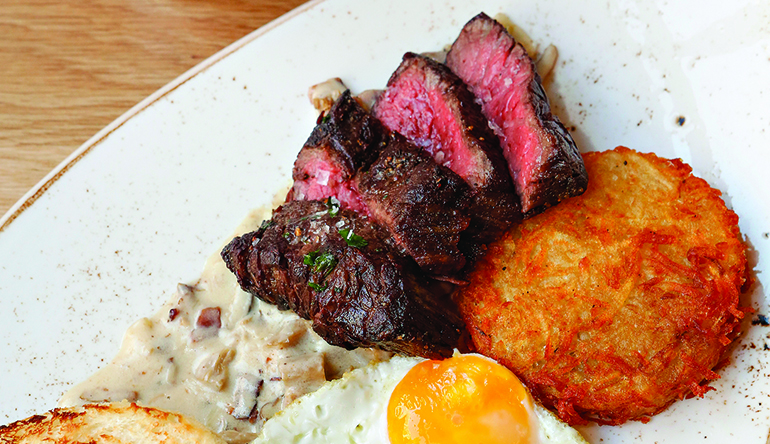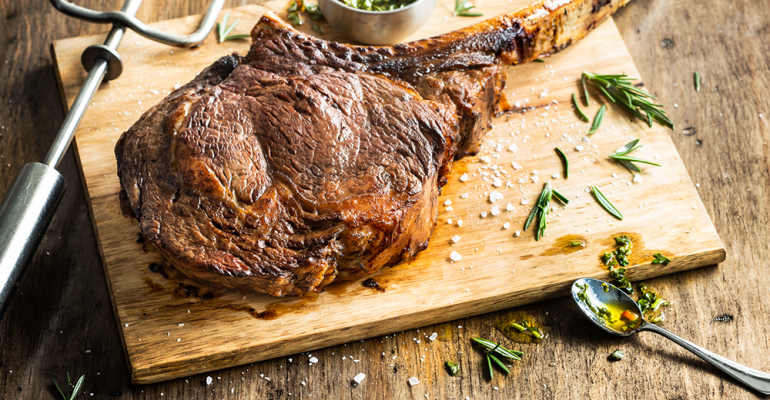Beef is arguably the most protean of proteins: Versatile and adaptable, it is a true gastronomic chameleon. It’s also a menu workhorse whose rising popularity has been buoyed by a confluence of favorable factors like lower commodity prices, rising consumer incomes and continued demand for high-quality protein.
And despite its familiarity, beef has a savory craveability that makes it culinary catnip to consumers and chefs alike.
A.M. vs. P.M. In fact, chefs are rolling out the beef bandwagon much earlier these days at trendy breakfast-and-brunch spots. Rise-and-shiners at Los Angeles-based Egg Slut can stoke up with the Gaucho, a breakfast sandwich that combines seared Wagyu tri-tip steak with a cage-free egg, chimichurri, red onions and dressed arugula. On an equally hearty note, award-winning Milktooth, a self-styled “fine diner” in Indianapolis, dishes up Beef & Bacon Sloppy Joe on Amelia’s Pullman bun.
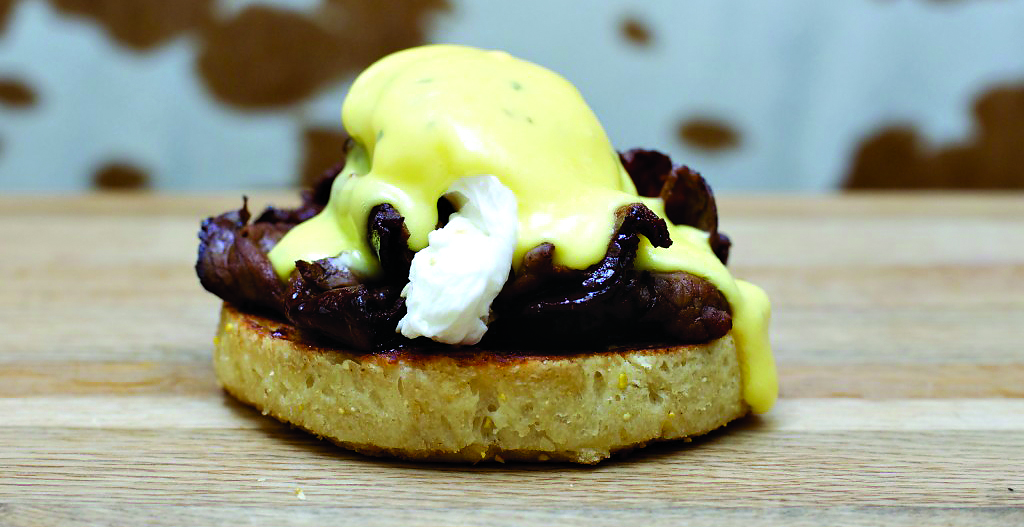
Sirloin benedict from Urban Farmer.
Beef is all about brunch at four-unit Urban Farmer Steakhouses. At the Cleveland location, customers can start their day with Beef Bourguignon Hash with fingerling potatoes and arugula or the Ohio Proud Shaved Sirloin Benedict on a house-made English muffin, while the Denver branch brunch bunch can opt for Bison and Beef Chili with green-garlic cream or Grilled 7X Wagyu Tri-Tip Steak and Eggs made with all-natural Colorado beef.
In the wee hours, nocturnal carnivores in Atlanta have their pick of pick-me-ups. The special late-night menu at ritzy, retro Marcel features classics like Steak Frites with sauce vert chased by a Bananas Foster Brownie. Hipsters at Punch Bowl Social can recuperate from karaoke with restoratives like SRF Dog with a Snake River Farms beef frank, fried shallots and chow chow; or Serious(ly) Sloppy Joe with grass-fed, hormone-free beef, red pimiento and buttermilk slaw. And at Tiny Lou’s, a shiny new revival of a formerly shady nightspot, night owls can head to the bar to grab a double-stacked Clermont Burger dressed with Gruyére, bacon jam and pickled green tomato.
Big vs. Small. While beef snacks and appetizers can provide a pop of protein and indulgence at a smaller price, a moderate price tag doesn’t connote minimal creativity.
Huntress, a “sophisticated steakhouse and whiskey society” coming onstream this spring in San Diego, will open with an opening course of Beef Sashimi with picked kohlrabi, ponzu demi vinaigrette and shiso. Similarly, at Burwell’s Stonefire Grill in Charleston, S.C., Wagyu Beef Tartare benefits from an Asian marinade, emberred mushrooms, yuzu slaw with uni mayo, furikake, and fried wontons. Miami’s Beaker & Grey looks to a different part of the globe for inspiration; its Cheeseburger Croquettes are spiked with a side of Peruvian huancaina sauce made with cheese, onions and aji amarillo peppers.
Beef eaters who would rather go big than go home can be satisfied, too. Smith & Wollensky’s Steak for Two menu includes a 46-ounce porterhouse and a 44-ounce Snake River Farms American Wagyu ribeye, suggesting the two carnivores in question have seriously substantial appetites.
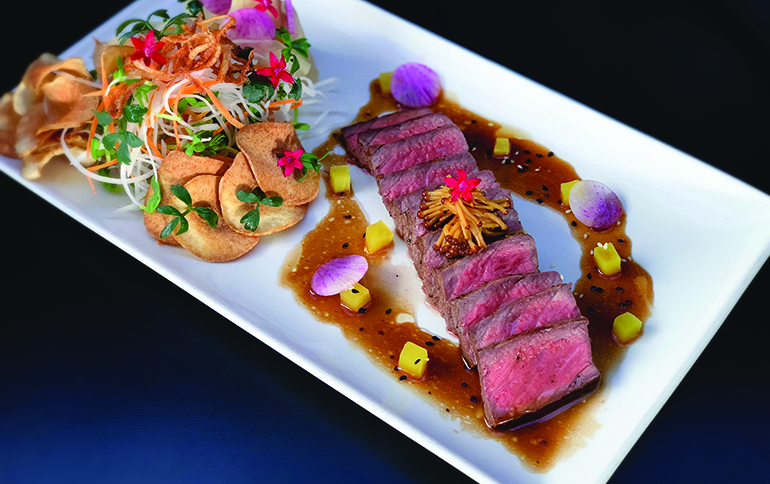
Seared beef sashimi with pickled kohlrabi, ponzu demi vinaigrette and shiso from Huntress.
Fogo de Chão, the Brazilian steakhouse chain that has built its business on protein excess, recently introduced a 32-ounce ribeye. More modestly, it suggests the Dry-Aged Tomahawk Ribeye be shared by four or more people. It sports a rather immodest a-la-carte price tag of $89 and is not included in the all-you-can-eat churrasco meal.
Old vs. New. Contemporary consumers, especially those of the Millennial variety, want reassurance about the food choices they make, and a whole a crop of new-age steakhouses is working overtime to validate those choices.
Urban Farmer’s commitment to agriculture is right in its name. The menu touts its local and organic bona fides, its direct connection between land and plate, and its endorsement of whole-animal butchery. Burwell’s also takes a waste-not/want-not approach, and its commitment to sustainability includes creative use of trim pieces that are too small to go on the center of the plate.
The restaurant sells “tons and tons” of Steak on the Rocks, the signature appetizer in which patrons cook their own small steak bites on sizzling stones heated to 700 degrees, thereby creating a fun and satisfying dish while cutting down on trim waste. Selling trimmed bits helps keep entrée prices in line, a savvy strategy that benefits the diner, the restaurant and, ultimately, the ranchers with whom it partners.
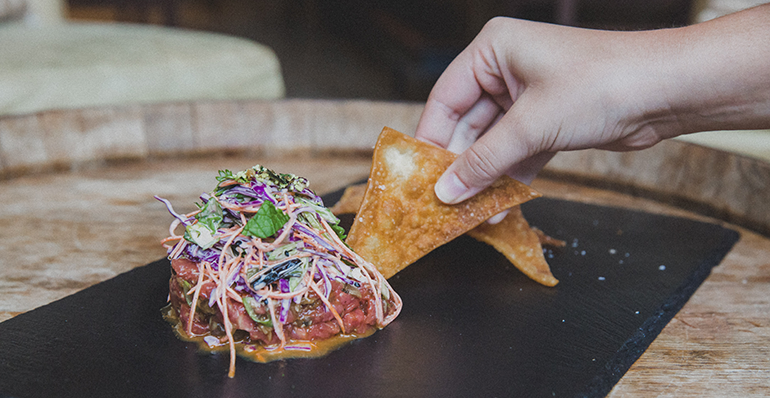
Burwell’s Stonefire Grill's wagyu beef tartare.
It’s become SOP for many contemporary restaurateurs to promote their commitment to better beef on their menus, a tactic that allows them to address hot-button issues like grass-fed, pasture-raised, grain-finished and so on. Brands may be identified along with breeds like Angus or Wagyu and the rancher who produced them.
And in what may be the shape of things to come for beef-centric restaurateurs, last year LGO Hospitality, operator of 11 concepts headquartered in Santa Monica, Calif., went a step further by rolling out its proprietary LGO Reserve brand. Beef is grown to its specific, ultra-high standards that exceed the U.S. Department of Agriculture’s, resulting in a product that is truly a cut above.
Nancy Kruse, president of the Kruse Company, is a menu trends analyst based in Atlanta.
Grilled 7x wagyu steak and eggs from Urban Farmer.